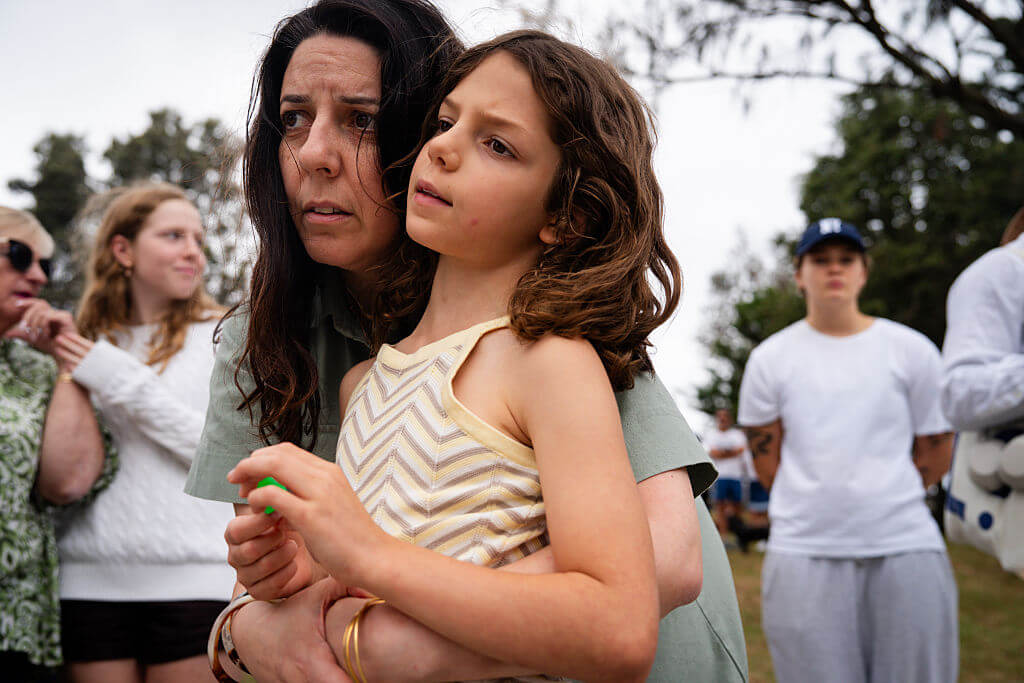Everybody’s Fiddler
The Marc Chagall retrospective currently at the San Francisco Museum of Modern Art includes some of the artist’s most arresting pieces, from the flying lovers in “Above the Town” to the “White Crucifixion” (Jesus is wearing a tallis!) to Moses leading his people in “The Crossing of the Red Sea.” And yet the most commanding image is still the one we know the best: the fiddler on the roof originally created for the Moscow State Yiddish Theater in 1920 and called, simply, “Music.”
Most Broadway lovers know that this image, by far Chagall’s most popular and well-known creation, was the source of the title for the 1964 stage musical “Fiddler on the Roof,” based on the Tevye stories of Sholom Aleichem. But, oddly, that connection has been lost since the release of the 1971 film version (with its more realistic and less colorful depiction of the town of Anatevka). In fact, some current Chagall experts, including Howard Greenfeld, explicitly deny any relation between the musical and Chagall’s painting, while certain Sholom Aleichem experts, such as Hillel Halkin, remain adamant that the writer never mentioned any fiddlers on any roofs. Chagall’s imagery, they assert, had nothing to do with Sholom Aleichem’s words.
They are wrong.
With a century of scholarship to ground us, “Fiddler’s” upcoming 40th anniversary (in September 2004) encourages us to look at the musical’s two major sources with fresh eyes. Having studied the subject myself for several years, I think there was a clear point of convergence, a person who became an archetype. His name was Stempenyu. According to Yale Strom, author of “The Book of Klezmer: The History, The Music, The Folklore,” Stempenyu was born with klezmer in his blood, the descendant of 10 generations of klezmorim. “By 18, he had his own kapelye [klezmer band] in Odessa and was known for his virtuosity as well as his composing skills,” wrote Strom. “Eventually he settled down in Barditshev and continued to polish his reputation.”
Stempenyu died in 1879 at the age of 57. Nine years later, Sholom Aleichem wrote “Stempenyu: a Jewish Romance.” Although an obscure story today, in its time it was extremely popular; in fact, it was the first Sholom Aleichem story translated into other languages, first German in 1889, and then English in 1913. In her research on the novel, University of Michigan professor Anita Norich quotes a letter from Sholom Aleichem in which he explicitly says that “Stempenyu” was based on “a real figure, a violinist, from Berdichev.”
In 1907, according to author Jacob (Kobi) Weitzner’s book, “Sholem Aleichem in the Theater,” Sholom Aleichem wrote a theatrical adaptation for Boris Thomashefsky’s People’s Theater in New York, but the play was a disaster. Still, Sholom Aleichem was undeterred and, according to J. Hoberman in “Bridge of Light,” Sholom Aleichem completed a screen adaptation, and Maurice Schwartz optioned the film rights from his widow after he died in 1916.
Even though he never did make a movie version of “Stempenyu,” Schwartz’s 1929 stage version for the Yiddish Art Theatre in New York was a great success. And it is in this production that we find the critical link connecting Sholom Aleichem and Chagall with “Fiddler”: a set designer named Boris Aronson. Aronson, who designed the set for Schwartz’s production, had worked at the Moscow State Yiddish Theater at the same time that Chagall worked there. He is the same Boris Aronson who published a monograph in 1923 called “Marc Chagall,” the same Boris Aronson who designed the sets for “Fiddler” in 1964. When Sidney Alexander interviewed Aronson for his 1978 book “Marc Chagall: A Biography,” Aronson told him: “As a designer [Chagall] is doing ‘Fiddler on the Roof’ all his life.” In Frank Rich’s “Theatre Art of Boris Aronson,” Aronson is quoted as saying: “[Chagall] takes Anatevka with him wherever he goes. I only got to do it once.”
Although there is no proof — yet — that Chagall knew of Stempenyu the man or had read “Stempenyu” the story, we know from his autobiography, “My Life,” that Chagall studied violin as a child, and we know from his wife Bella’s autobiography, “Burning Lights,” that she was a fervent reader. “My heart says that not only did Bella read the initial text by Sholom Aleichem, but Chagall did too,” says Bella Meyer, Chagall’s granddaughter. Strom and Weitzner also told the Forward that the connection is a likely one.
Each of these three great artists — Stempenyu, Sholom Aleichem and Chagall — was trying to capture the same phenomenon. As Sholom Aleichem wrote in the prologue to “Stempenyu”:
Jan Lisa Huttner is the creative director of “Films for Two: The Online Guide for Busy Couples” (www.films42.com). She is currently working on a book comparing the stage and screen versions of “Fiddler on the Roof.”
















